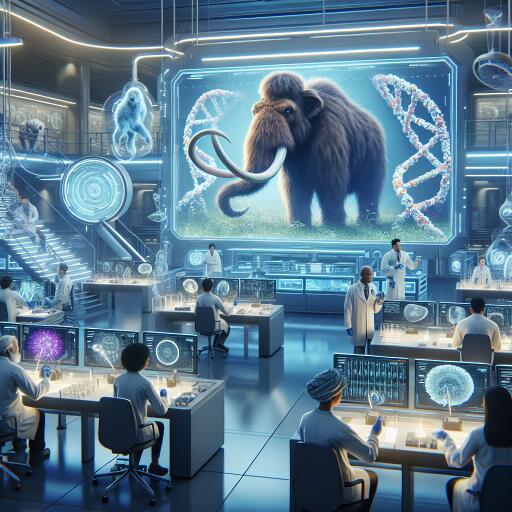
Colossal: Inside the de-extinction company on the verge of bringing back the woolly mammoth
At the frontier of scientific innovation, a company named Colossal embarks on a mission that might seem like it’s straight out of a science fiction novel: the resurrection of the woolly mammoth. With aspirations to witness a genetically modified elephant bearing the characteristics of the ancient behemoth by 2028, the team at Colossal is pioneering the realm of de-extinction.
Despite the impossibility of reviving dinosaurs, as clarified by Ben Lamm, CEO and Co-Founder of Colossal, their pursuit leans towards creatures whose absence still echoes in their erstwhile habitats. De-extinction, for this passionate collective, goes beyond resurrecting mammoths; it encompasses a broader vision of rewilding and rejuvenating biodiversity across the globe.
Lamm envisions de-extinction and species preservation as complementary forces, aimed at rectifying the ecological disruptions caused by species loss. Colossal’s ambitious projects include leveraging advanced science and substantial funds—totaling over $235 million—to support the restoration of crucial species such as the African forest elephants and American bison, among others. Their endeavors are congruent with global rewilding efforts that aim to mitigate climate change by enhancing natural carbon capture and storage processes.
A study in the Nature Climate Change journal from 2023 underscores the potential of reintroducing key species to achieve significant ecological restoration and carbon sequestration, which could contribute to keeping global warming under the 1.5C threshold as outlined in the Paris Agreement.
Lamm advocates for a synergy between technology and nature, harnessing advancements to bolster the planet’s inherent capabilities. This balance may hold the key to addressing some of the most pressing environmental challenges and reversing the damages inflicted by human activities.
However, the concept of de-extinction is not without its skeptics, raising questions about the feasibility, ethical considerations, and potential unintended consequences of reintroducing species like the woolly mammoth into modern ecosystems. Colossal’s approach, therefore, is meticulous and staged, focusing first on creating a cold-adapted elephant-mammoth hybrid that could thrive in the Arctic tundra, potentially averting permafrost melt and promoting grassland restoration.
This innovative venture isn’t only about bringing back what’s lost; it’s equally committed to bolstering the survival chances of existing species. Breakthroughs made in pursuit of de-extinction have already yielded other ecological benefits, including a promising vaccine against a deadly virus affecting elephants. Such advancements highlight the dual benefit of this research, offering hope not just for lost species, but for those teetering on the brink of extinction.
While de-extinction might seem like a technological workaround to deeper issues of biodiversity loss and environmental degradation, Colossal’s initiative exemplifies a broader commitment to ecosystem restoration and conservation. It ignites a conversation about humanity’s role in both the decline and potential revival of nature’s marvels, emphasizing the importance of preserving the richness of life on our planet.
As the idea of bringing back species like the woolly mammoth captures the world’s imagination, it serves as a beacon for conservation efforts worldwide, making the case that through unity, innovation, and respect for nature, humanity can aspire to correct some of the ecological wrongs of the past and safeguard the environment for future generations.





Leave a Reply